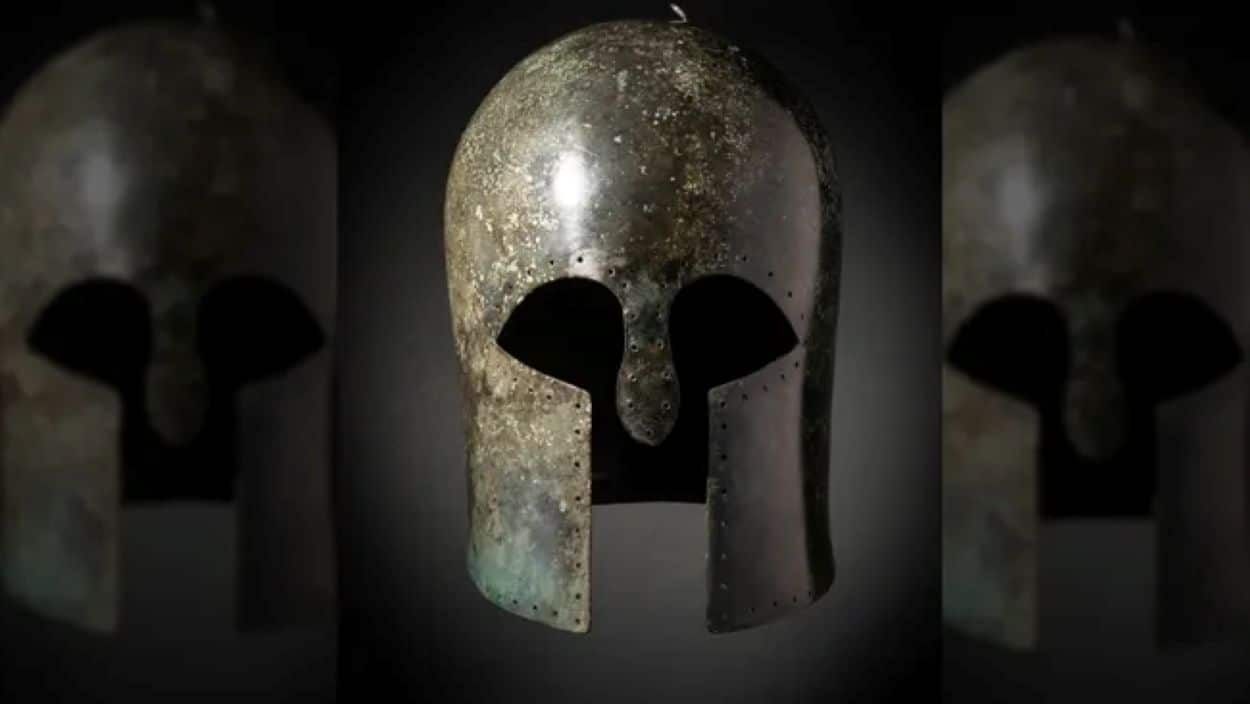A Corinthian helmet, meticulously crafted from bronze and dated between 500 and 450 B.C., will soon be auctioned in London.
The artefact is a remarkable relic from the era of Greek hoplite warriors, who were known for their skilled combat in phalanx formations.
The helmet is a testament to ancient Greece’s advanced metalwork and offers a window into the era’s warfare artistry. Ivan Bonchev, director of Apollo Art Auctions, suggests a Spartan warrior might have worn it, enhancing its historical allure. The Art Loss Register’s thorough verification, ensuring the helmet’s legitimacy and clarifying that it is not associated with illicit activities, supports this claim.
Characteristic of Corinthian helmets, this piece covers the face while providing space for eyes and mouth, balancing protection and visibility. These helmets were not confined to Corinth; they were widespread among various Greek city-states, including Sparta and Athens. Decorated with geometric patterns or horsehair crests, these helmets are a frequent motif in Greek art, symbolizing the valour and prowess of the warriors.
The helmet, which is slated for auction and estimated to sell for$72,000 to $108,000, is a significant artefact representing the legacy of ancient Greek military innovations. Its design, lacking ear holes, aligns with earlier versions, prioritising maximum protection during battles.






